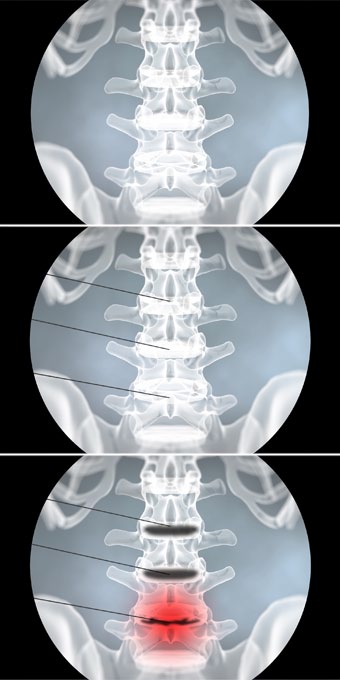
Overview
This procedure, also called a “discogram,” helps your doctor find painful spinal discs. It can show the source of pain in your back. To see how it works, let’s watch a discography done in the lumbar spine.
Preparation
To begin, you lie down and you are given medicine to help you relax. You will still be awake. That’s so you can tell your doctor what you feel during the procedure. Your lower back is numbed with local anesthetic.
Placing the Needles
The doctor uses a video x-ray device called a “fluoroscope” to carefully guide a needle into the target disc. If more than one disc is being tested, a needle is placed into each one.
Testing the Discs
Next, the doctor injects contrast dye into each disc, one at a time. The dye raises the pressure inside the discs. When this happens, you may feel pressure or pain. If you feel pain, that may be a sign that the disc is diseased. The doctor will take images with the fluoroscope so your discs can be studied carefully.
End of Procedure and Aftercare
When the procedure is done, the needles are removed. Before you leave, your doctor may want to get a more detailed scan of your discs. Discography can cause your back to be slightly
sore for a few days. Your healthcare provider will give you tips to help ease this minor pain.

